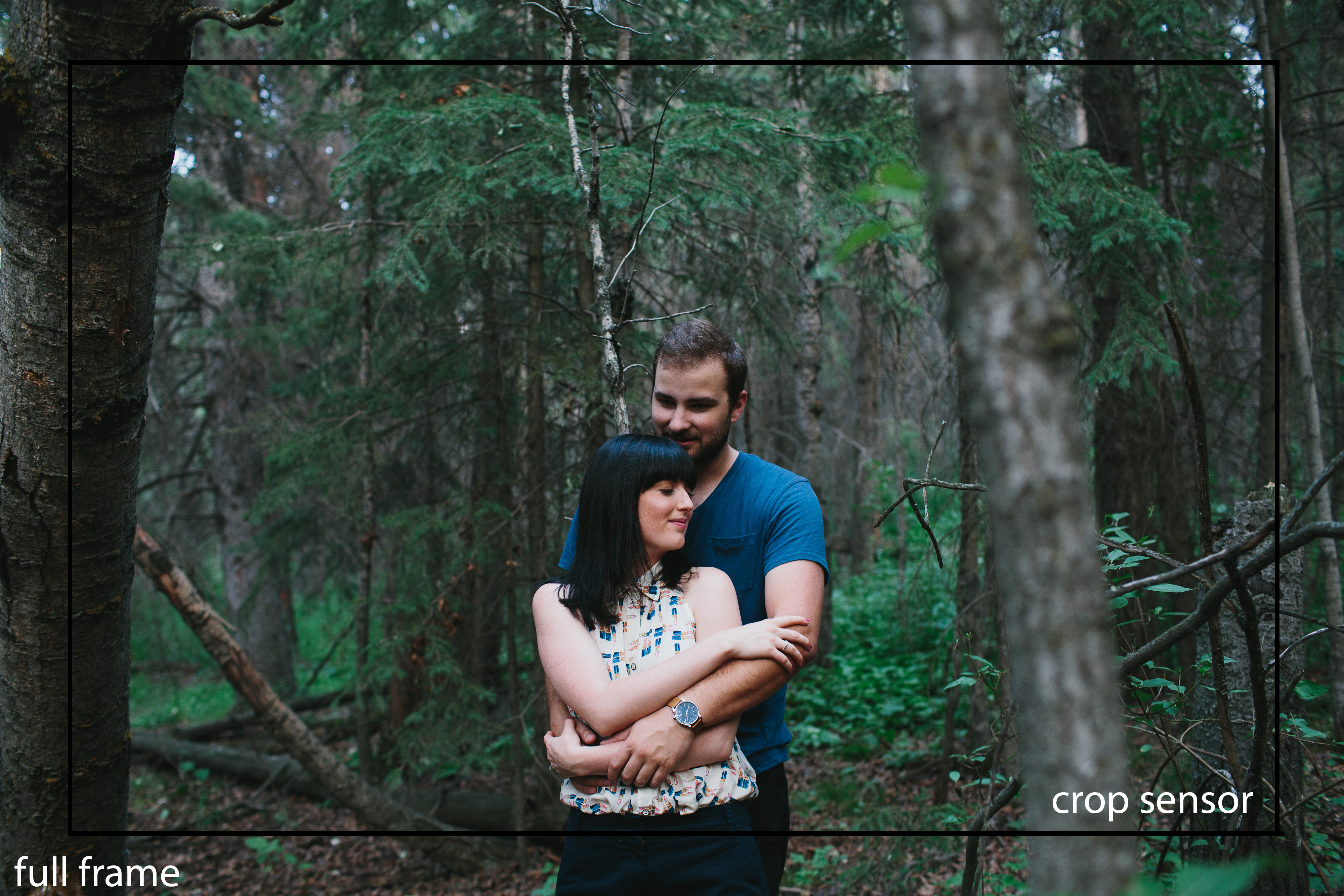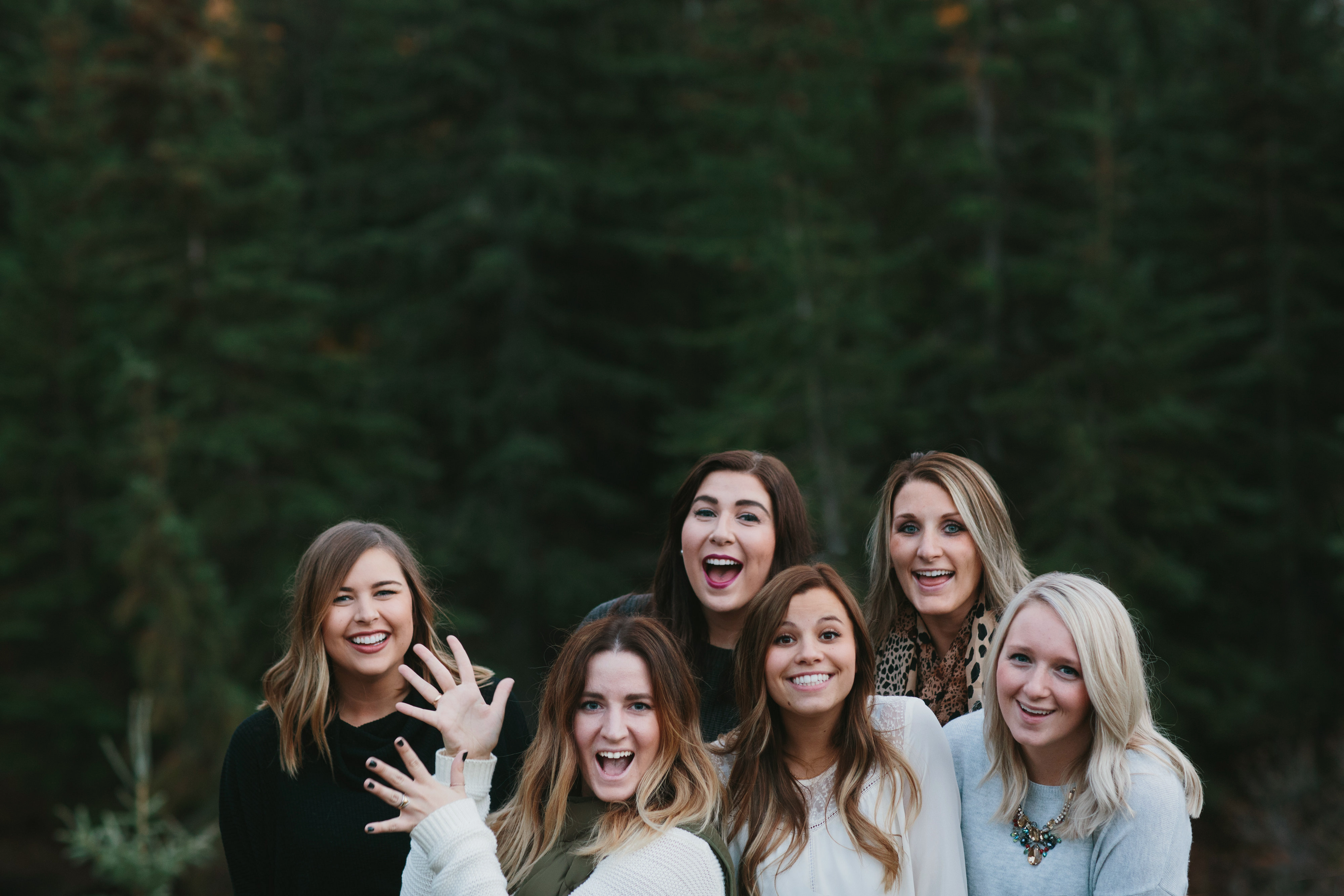Lately, I’ve had a few people message me on Facebook inquiring as to what camera they should purchase as they are interested in having a nice camera for different reasons. It’s actually a difficult question to answer. So I thought I would take a second, review some of the current cameras out there, and tell you what I would purchase if it was me purchasing a camera and starting my photography journey all over again. So take this info for what it is. I am by no means a techy person who is the all to end all for information on cameras. These reviews are all just my opinion.
I began on a Nikon. A D90 to be specific. It wasn’t a full-frame camera, which means it had a crop-sensor on it. If a full-frame DSLR, like a Nikon D800, and a crop–sensor DSLR, like a Nikon D7100, take the same photo from the same distance with the same lens and point of view, the D7100 will capture a tighter field of view than the D800. Below is an approximation of what this means.

Deciding whether to purchase a DSLR or a mirrorless camera can be a tricky thing to figure out. If you were wanting a camera for travel purposes or a great camera you can throw in your purse to capture moments of the family at an amusement park or beach, the mirrorless camera might be a better option for you. They’re smaller and lighter in weight. They take great images and with little to no understanding of how to use them necessary. Now, if you are wanting to have a high quality professional-grade camera then a DSLR is your best bet.
Here are some of the things I recommend looking for in a new camera. ISO range and the number of focal points and how many of those focal points are cross-sensors. ISO range means it’s ability to take photos in all types of light. The higher the ISO range, the better the photo can be in low lighting like inside a house for example. Let’s take a look at some current options on the market.
Crop Sensor Cameras
Canon EOS Rebel T6s $766 & Nikon D5500 $759
Now, both of these cameras are crop-sensor cameras. The Canon T6s has 19 autofocus points and all of them are cross-sensor. The Nikon D5500 has 39 autofocus points with only 9 of them being cross-type sensors. The T6s has an ISO range of 100-12,800 although you can expand it, but really you most likely won’t need too. The D5500 ranges from 100 – 25,600. Both cameras have built-in wifi which makes it easy to upload any files to social media sites easy enough. The T6s is also has remote capability if you want to take a group portrait or a self timer shot. Both cameras also take full HD video, but the Canon T6s seems to have the upper edge when it comes to focusing while recording video. There are some technical aspects to this conclusion but I wouldn’t be able to explain them.
Overall, I think the Canon T6s is the better camera option here.
Canon 70D $1,199 & Nikon D7200 $1,249
70D here has 19 autofocus points which again are all cross-type AF sensors. The Nikon D7200 boasts 51 autofocus points with 15 being cross-sensor. The D7200 has ISO range of 100 – 25,600 and the 70D 100-12,800 with an expansion available up to 25,600. The Canon here might take the cake on the fact that when it comes to video, the 70D shoots like a camcorder. With the help of Movie Servo AF, subjects are tracked smoothly even when in motion. So if video will be something you’re going to want to be able to use then the winner here is the Canon 70D.
Canon EOS 7D Mark II $1,799 & Nikon D610 $1,699
Okay. 7D Mark II steps it up here with a 65-point AF system which are all cross-type and the D610 holds 39 with 9 cross-type sensors. ISO range on the D610 goes from 100-6400 but again also can be expanded to 12,800 and then 25,600. The 7D Mark II goes from 100-16000 and again shoots video like a camcorder. The Canon here also boasts enhanced resistance to dust and water and since I’ve had a camera go down due to water damage, I would say this is an important thing!
This one, to me, goes to the 7D Mark II by a landslide!
Full Frame Cameras
Canon EOS 6D $1,699 & Nikon D750 $2349
Well, this is an unfair competition so I’m just gonna breakdown each of these cameras separately and not choose a winner. The Canon 6D is a full-frame camera with a ISO range of 100-25,600 with built in wifi. The focus system here is a little less sophisticated with an 11 point focus system with a cross-type in the centre. The Nikon D750 ISO range is 100-12,800 with an expansion to 51,200, 51 focus points including 15 cross-type sensors, and has built-in wifi. The back LCD screen also can be tilted out which would help with recording video in high sun instances.
Canon 5D Mark III $3,099 & Nikon D810 $3,499
Now, I have the Canon 5D Mark III so I’m hoping it pulls out on top of this competition. The ISO range of the 5D Mark III is from 100-25,600 and it handles noise beautifully. It can expand up to 102,400 but I have certainly never pushed it that high. The focus system holds 61 focus points with 41 of them being cross-type sensors. The Nikon D810 ISO is 64-12,800. I’m intrigued by that low ISO. Most cameras start at 100 and you can dial it back to 32 even. Here we’ve got 51 autofocus points and 15 of them a cross-sensor. Both of these cameras are great cameras. Really, with either, you couldn’t go wrong.
The last piece of my opinion I’ll share is whatever camera you do buy, do NOT buy it with the kit lens. The prices I’ve listed are all from The Camera Store in Calgary, Alberta. For me, personally, I only shoot with prime lenses. I’ve tried zoom lenses but they just do not fit my shooting style. That being said, my second shooter has her kit lens she got with her Canon 5D Mark II that she loves! But truthfully, every photographer can benefit from a 50 mm lens so I suggest everyone start out with one. I’ll go into more detail about lenses in another post.
3 last tidbits of advice to new beginners
- read your manual and google everything you don’t understand which in the beginning will be a lot
- shoot, shoot, and then shoot some more. Take pictures of everything and anything from every angle in a variety of different lighting situations
- edit in lightroom
Last but not least, I’d recommend buying a camera you can grow into rather than on you will grow out of quickly. Cameras are always replacing themselves with new technology and the best place to invest your money is, and will always be, on lenses.
Now, this is a picture of me and my roommates, and I’m showing my jazz hands at the prospect of you buying a camera and getting started on a photography journey of your own! Whoop! You go, Glen Coco!

I hope this all helps! If you have any questions feel free to leave them in the comment section or email me at leahlorna@gmail.com
xo


